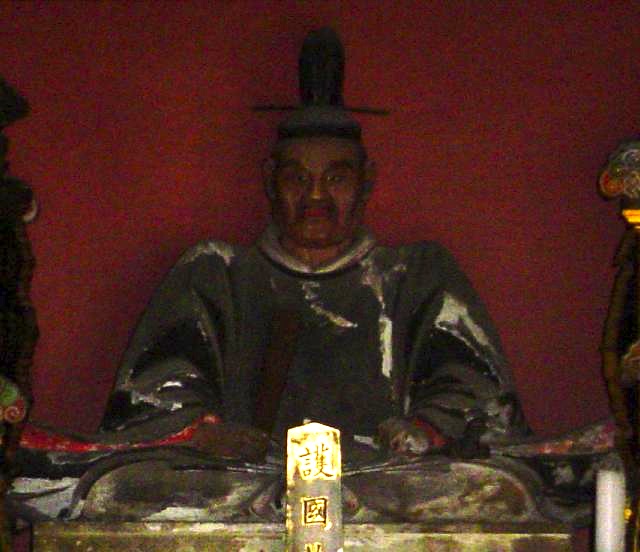“There may be a hundred stances and sword positions, but you win with just one.”
A Hereditary Book on the Art of War (1632)
Yagyū Munenori was a Japanese swordsman, founder of the Edo branch of Yagyū Shinkage-ryū, which he learned from his father Yagyū "Sekishūsai" Muneyoshi. This was one of two official sword styles patronized by the Tokugawa shogunate . Munenori began his career in the Tokugawa administration as a hatamoto, a direct retainer of the Tokugawa house, and later had his income raised to 10,000 koku, making him a minor fudai daimyō , with landholdings around his ancestral village of Yagyū-zato. He also received the title of Tajima no Kami . Wikipedia

“There may be a hundred stances and sword positions, but you win with just one.”
A Hereditary Book on the Art of War (1632)
A Hereditary Book on the Art of War (1632)
“See first with your mind, then with your eyes, and finally with your body.”
As quoted in Living the Martial Way : A Manual for the Way a Modern Warrior Should Think (1992) by Forrest E. Morgan, p. 88.
As quoted in Soul of the Samurai (2005) by Thomas Cleary, p. 28
Variant translation: If you have attained mastery of swordlessness, you will never be without a sword.
A Hereditary Book on the Art of War (1632)
As quoted in The Japanese Art of War (1991) by Thomas Cleary
A Hereditary Book on the Art of War (1632)
A Hereditary Book on the Art of War (1632)
Context: A stroke of the sword that does not hit its target is the sword stroke of death; you reach over it to strike the winning blow. Your adversary's initiative having missed its mark, you turn the tables around and get the jump on your adversary.
“Conquering evil, not the opponent, is the essence of swordsmanship.”
As quoted in Behold the Second Horseman (2005), by Joseph Lumpkin, p. 44.
As quoted in Behold the Second Horseman (2005), by Joseph Lumpkin, p. 53.